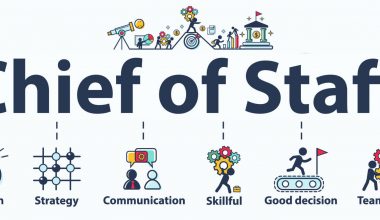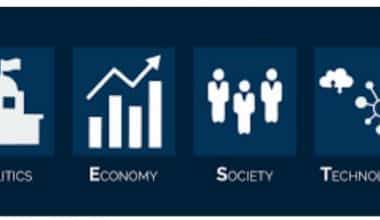You put in a lot of time to make sure your CV is flawless and presents your qualifications in the best light. Your resume is your strongest option in the war for employment. But despite your efforts, you are not getting enough interviews for jobs for which you are qualified. You should know that after you submit your resume, it probably won’t even be seen by a human being but rather by an automated system (ATS). The reality is that your resume probably won’t even be seen by a human being. This is due to the rise in the use of the applicant tracking system (ATS) used by many companies to sift through candidates’ applications. As a recruiter, the application tracking system (ATS) is a crucial tool for recruitment, but there’s always debate over which one is the best. Examples of ATS will be discussed in this article.
What Is Ats?
An ATS is a piece of software used to manage the many stages of the hiring process, such as the distribution of job openings and the reception of applications. It compiles data about job seekers and makes it accessible via a searchable database. An applicant tracking system is used to keep tabs on potential employees as they move through the hiring procedure. ATS also aids in the scheduling of interviews, gives alerts and notifications, and sends automated emails to applicants and staff like HR departments and recruitment managers.
However, these structures serve as much more than simple managers. Along with recruitment agencies, an applicant tracking system (ATS) can also help find the best candidates. It may do a preliminary analysis of the applications in order to choose the best people for a job. the applications. For a more in-depth look at the job candidate, it may also scan for keywords or employ AI-like methods. The process of reviewing resumes and applications should be sped up.
What Are the Types of Ats?
We’ve done the research to find the best ATSes on the market to save you time. To assist you choose the best applicant tracking system for your organization, we’ve listed the most prevalent types.
#1. Greenhouse
In the field of recruitment software, Greenhouse is among the best ATSs in the world. Various reports rank it alongside Workable as one of the best applicant tracking systems. Most of the company’s software is for the mid-market and enterprise, and its headquarters is in New York City.
Even though Greenhouse and Workable share a lot of similarities in terms of features, there are some key distinctions between the two in terms of product deployment, integration choices, sourcing possibilities, hiring team communication, and hiring manager engagement.
#2. Workable
Workable is a company that makes software. It gives businesses of all sizes, but especially software development companies, access to a high-quality applicant tracking system. The ATS not only handles the whole hiring process but also makes it easy for open positions to be posted on a company’s website and other job boards. Workable’s applicant tracking system (ATS) includes integration with LinkedIn, synchronization of emails and calendars, vital reports, HRIS integration, interview kits, and scorecards, pre-made job descriptions and offer letters with electronic signatures, and more.
It also has paid premium services like a referral portal with reporting, automatic actions, unique hiring pipelines, and a developer API. It also has a native language option, CSV export, a comprehensive reporting suite, and self-scheduling interviews. Also, read RECRUITING MANAGEMENT SYSTEM: Types, Features, and Examples.
#3. Zoho Recruit
Any company, no matter how big or small, can benefit from using Zoho Recruit as their ATS. Automatic applicant matching, LinkedIn connectivity, and job board integration are just a few of the features that make it useful for businesses. It has a built-in career website builder and editable options like renaming tabs and adding fields.
In addition to its useful features, Zoho Recruit’s robust security system makes it an attractive option for businesses that must deal with sensitive applicant data. Because Zoho has so many integrations, companies can keep their whole recruitment process in the Zoho ecosystem. You may try out Zoho Recruit risk-free for 15 days at a price that won’t break the bank.
#4. JazzHR
Using a system like JazzHR’s ATS will help you streamline and improve the entire recruitment procedure. Each available position can have its own unique workflow based on your preferences and the needs of your team. You can also automate things like assigning tasks between phases of recruiting to keep your team working and on track.
By providing a live feed of an applicant, you can keep your hiring team aware. Finally, group recruiting ensures that only the finest candidates are examined for open positions.
#5. BreezyHR
The application tracking system (ATS) BreezyHR has quickly become popular, and unlike its rivals, it offers a free plan that lasts forever. This includes an unlimited number of users and job seekers, posting to more than 50 online job boards, and advanced resume analysis. Upgrade to the Startup plan for background checks, candidate questionnaires, and customizable workflows and phases. Whether you pay annually or monthly, the Startup plan costs $157 or $189 per month.
What Are the Features of an Ats?
Using an applicant tracking system (ATS) speeds up the application process by letting people apply from any web-connected device without having to sign up or log in. Because of this, businesses have access to a broader pool of potential employees.
Companies utilize applicant tracking systems (ATS) to discover and present the best prospects to recruitment agencies. Some features of the ATS software include:
#1. Candidate Monitoring
Using this method, you can set up custom application phases that match specific steps in your hiring process (for example, “applied,” “screened,” “first interview,” etc.). You may keep applicants updated on their application status and make sure they’re receiving important information.
#2. Setting Up an Interview
This is especially important if you have numerous interviews happening at once and need to keep accurate records. You can arrange interviews and send interview kits with the candidate’s résumé and preliminary questions from the system.
#3. Analytics
Even though it is necessary for a talented team, it may still be of interest to companies that are hiring people before they set up a talented team. Keep track of your efforts and know when it’s time to make changes. For example, if people are visiting your careers website but not applying for jobs, you should figure out why.
#4. Integration of the HRIS
Some applicant tracking systems (ATS) come with HR information system (HRIS) or human resource management system (HRMS) connectivity, which lets newly hired employees go straight into your HRIS. It is also possible for this to function in the opposite direction; as soon as a role becomes available in the HRIS, it also becomes available in the ATS.
In-app messaging and integration with social media platforms like LinkedIn and Github are two examples of the kinds of advanced features that can be found in the modern applicant tracking system (ATS). A CRM system can establish a pool of potential individuals and “warm” them with occasional emails about your organization.
How Does the Ats Work?
An ATS can be used to streamline and manage the whole recruitment process, from posting a job opening to making an offer. Integration with major employment sites simplifies posting jobs, managing applications, and creating profiles for prospective employees. The ATS records everything that happens in relation to the candidate. The following are the fundamental steps in the operation of an applicant tracking system:
- ApplicantsTrackingSystem (ATS) user submits job postings. The position’s title, needed abilities, and minimum work experience are all outlined in this demand.
- The position is advertised both within the company and on external employment sites.
- All applications must be submitted online, either through the company’s website or the job board itself. They might be asked job-specific questions about their background and qualifications. Some methods allow for the automatic rejection of candidates based on their responses to a series of questions.
- As applications come in, the ATS may analyze the resumes and prioritize the best candidates.
- A recruiter evaluates all of the applications they receive and chooses the best ones to contact. Those who apply but aren’t chosen may get a robotic email saying so.
- The interview process may include discussions with the HR department, the hiring manager, and possibly others. After each interview, data can be entered into the ATS for easy reference.
- Usually, when a recruiter has settled on a prospect, they will use the applicant tracking system to extend an offer.
- Upon the candidate’s acceptance of the offer, they will be considered “hired” in the personnel database. After that, the employee is given access to the ATS’s or HR system’s onboarding features, where they can learn about the company, read and sign digital policies, and fill out electronic paperwork.
How Do I Make an Ats Resume?
When writing a resume for an ATS, it is important to first review the job posting in its entirety. You may learn about the position’s title, preferred qualifications, and relevant keywords to put in your application by reading the job description. Here are some steps on how to create an ATS resume:
#1. In the Heading of Your Resume, Put the Job Title or the Work Experience You Need
Examining the job’s title is the first order of business. Here you can find information about the position’s title and preferred level of experience.
It’s likely that when looking to fill this position, HR will use the search terms “senior manager” and “sales” in their applicant tracking system.
There is a direct correlation between including job titles in your resume’s headline and an increased likelihood of getting an interview. As an example of a headline, you could write something like “Senior Manager with Ten Years of Sales Experience.”
Make sure to tailor the header of your resume to each position you apply for. To grab the attention of hiring managers and applicant tracking systems, you need a striking title.
#2. Find the Necessary Skills, and Put Them Front and Center in Your Resume
The second stage in writing a resume that will pass the ATS test is to review the posting in detail and emphasize the relevant skills.
These tend to be more powerful abilities. Hard talents, on the other hand, are more complex and require either formal education or extensive practical experience to acquire. Skills that are mentioned more than once in the job description should be given more weight.
The hard skill “marketing,” for instance, is used several times in the sample job description. Also, if you want to get this job, you should put this skill front and center on your resume.
#3. Find Phrases You Can Optimize For
Recruiters use a lot of keywords to look through resumes to find the best people for open jobs. It’s important to highlight your familiarity with these terms from the job description in your application materials.
There are a few things to keep in mind, though, before you begin adding keywords.
To begin, avoid keyword stuffing. To make your resume work with ATS, you need to tweak the keywords that are already on it so that they match the keywords in the job description.
This is important because most ATS can’t tell the difference between words that mean the same thing, like synonyms, abbreviations, and skills that are similar. Resumes that emphasize “customer service” experience may not be considered for the position if the posting requires “customer support.”
That’s why it’s crucial to modify your resume for each position you apply for.
How Do Companies Use Ats?
The applicant tracking system (ATS) evaluates each resume against a profile and ranks candidates. After the hiring supervisors find the most qualified applicants, they move quickly forward in the hiring process.
What Are the Benefits of Ats?
It can be a time-consuming and expensive ordeal to find and recruit new employees. By using an ATS, companies can speed up the hiring process and spend a lot less money. Here are more benefits of an ATS:
#1. Promotes Your Company’s Image
Make sure an applicant has a positive experience with your company regardless of whether or not they are hired. When you use an applicant tracking system (ATS), you can tell prospects exactly where they stand in the interview process at any given moment.
If you want your brand to have a good reputation, you need to be open and talk to people.
If you have an ATS in place, you can use it to automatically alert candidates as they progress through the interview process. This means you won’t have to keep them in the dark about whether they’ve been accepted or rejected or if they’ll receive any feedback. You can be sure that even the people who didn’t get the job will have a good impression of your company because of this.
#2. Facilitates the Recruiting Process
As a company expands, it may need to hire for several different positions at once. In the absence of a reliable ATS, the process can soon devolve into chaos. You can use an ATS to manage the whole hiring process instead of switching back and forth between different spreadsheets and programs to get the same information.
Furthermore, recruitment is critical at any level of development, and it needs to be efficient and precise to limit the damage that can be done by poor selection. An applicant tracking system (ATS) for small businesses makes it simple to do so by consolidating functions like job advertising, interview scheduling, candidate testing, offer administration, and new hire onboarding.
#3. Monitors and Controls a Database of Potential Employees
Even though job sites can help you find good candidates for new positions, you shouldn’t forget about the people you already have on staff. In the course of your candidate search, you may come across some outstanding individuals who are not a perfect fit right away. The pool of potential employees that you’ve amassed is called a talent pool, and it can be developed with the aid of an applicant tracking system.
A good ATS will help you avoid wasting time and money on reviewing applications and filling critical skill gaps in your company. With the help of an applicant tracking system, you can get the most out of the money you spend on managing your talent pool.
#4. Helps You Save Time by Removing Repetitive Work From Your Schedule
One benefit of using an applicant tracking system is that it frees up your time and energy to devote to other important projects. Since these jobs are so repetitive, a good ATS can cut your time spent on them by as much as half. By doing so, you can streamline and quicken your operations.
You can speed up the hiring process with an applicant tracking system, which lets you automatically schedule online tests and background checks, screen resumes, and reject candidates based on certain criteria.
How Do I Know if a Company Uses Ats?
You can tell if an organization is using an ATS if they do any or all of the following: Some websites may feature appropriate branding, and if you look closely at the URL, you can typically make out the name of the ATS system.
Conclusion
It’s not easy to fill open positions in your company with new employees, and you want to make the best possible hire. The hiring process can be greatly streamlined with the help of an online application tracking system, relieving a great deal of pressure from the shoulders of recruiters and hiring managers. However, if your company is having trouble finding qualified candidates, an applicant tracking system could be the answer.
ATS FAQs
Who uses an ATS system?
The vast majority of large companies make use of applicant tracking systems of some kind.
Do small companies use applicant tracking systems?
For smaller businesses, adoption is low but rising. About one-third as many small businesses as predicted one year ago utilize an applicant tracking system (ATS).
What file types does ATS software recognize?
As far as we know, ATS can read Word files. In addition, some of them can open PDF documents.
Similar Articles
- HIRE PLATFORMS: The Top Most Effective Options in 2022.
- Hiring an Executive: How a Recruitment Agency Can Help.
- ENDLESS CLICKS: A Comprehensive Guide To Digital Recruitment Marketing.
- Rental Application: Meaning and How to Write It.
- BCG MATRIX: Definition, Application and Importance






